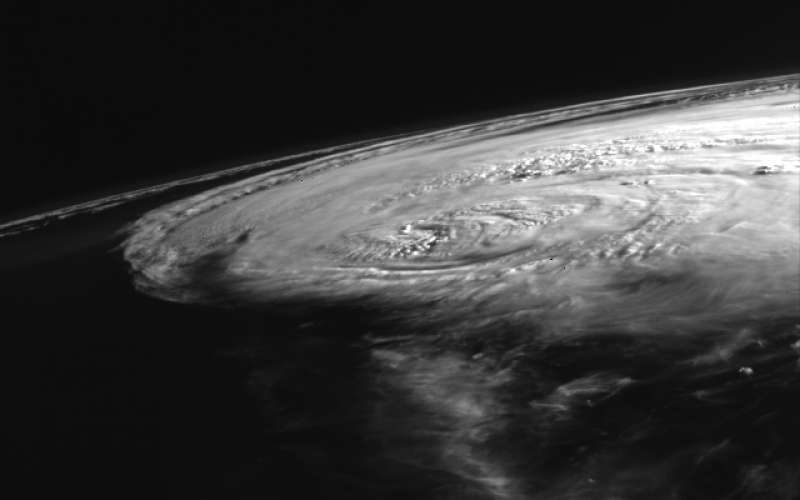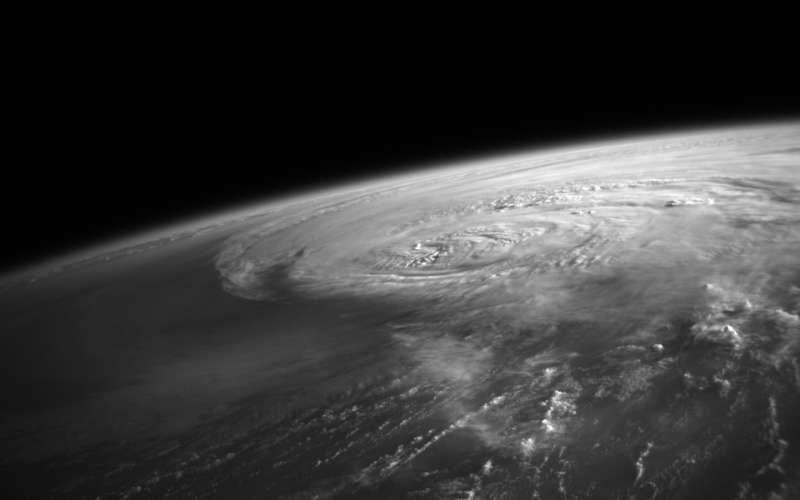When Hurricane Sally hit the Gulf Coast region of the United States, an AeroCube was laser-focused on the eye of the storm.
The Aerospace Corporation's Rogue Alpha/Beta CubeSats sent compelling imagery of the hurricane to Earth via laser communications, demonstrating how a small satellite can deliver large amounts of remote sensing data for weather and other research.
“Aerospace is excited to see another mission benefiting from the investments made in laser communications for small satellites,” said Darren Rowen, Director of the xLab Small Satellite Department. “The ability to transmit at high speeds of 200 Mbits per second optically with a spacecraft-body-steered laser transmitter continues to push the state of the art and has the potential to reduce cost while meeting valuable mission needs."
More than 1 gigabyte of data was downloaded from the two CubeSats, a bandwidth improvement of 200 times that of a radio frequency downlink.
The CubeSat was programmed to fly pointed at Earth’s horizon and then point and stare at the forecast position of the eye of the storm as it came into view, demonstrating the ability of small satellites to execute agile weather imaging. This video shows 200 frames of raw short wavelength infrared images taken at 1-second intervals of Hurricane Sally.
This successful laser communications operation completes a key threshold objective and will enable the next phase of Rogue mission operations. Remote sensing data throughput can be increased, and longer and higher framerate collections over wider geographical regions will be enabled for cloud scene characterization and weather image processing.
One of the Rogue CubeSats was programmed to fly pointed at Earth’s horizon and then point and stare at the forecast position of the eye of the storm as it came into view. This successfully demonstrated a typical “sideways-pointed wide field of view” collection mode, simulated a tip and cue of a trailing satellite, and showcased a potential new type of weather data collection.
“Using new prototype satellites, such as the Rogue Alpha/Beta constellation, we can obtain stereo observations from diverse orbital views, and image environmental events with new research-oriented spectral bands,” said Dr. Dee Pack, Director of the Space Science Applications Laboratory.


The Rogue CubeSats, also known as AeroCube-15, launched Nov. 2, 2019 and were sponsored by the Space and Missile Systems Center’s (SMC) Space Development Corps to investigate rapid reconstitution of an infrared remote sensing capability with a pair of 3U CubeSats. The mission is an example of Aerospace’s ability to support SMC’s shift to innovate faster and rapidly onboard new capabilities to better position the nation’s defense-related space enterprise.
“Rogue Alpha and Beta exemplify the power of strategic partnerships and the benefits of our streamlined acquisition strategy. Both CubeSats achieved paper to prototype in just 16 months,” said Igor Brin, Materiel Leader in the Innovation and Prototyping Directorate, part of SMC’s Space Development Corps. “Once on orbit, the project achieved all key threshold objectives in less than nine months - three months early - when it successfully transferred its IR weather data over its laser comm downlink. Rogue now serves as a pacesetter to show how the USSF, enabled by key partnerships, does business differently to ensure we’re 'always above.’”
The recent Hurricane Sally imagery collection and downlink is an excellent example of the Rogue CubeSats’ capability.
“Imaging Hurricane Sally’s forecast landfall is a demonstration of how agile, dynamically taskable, small satellites can contribute as helpers or gap fillers for constellations of large satellites,” Pack said. “Equipped with compact laser communications, our CubeSats can bring down significant amounts of new data for remote sensing researchers, and help pioneer new mission concepts for larger constellations of tiny satellites.”
